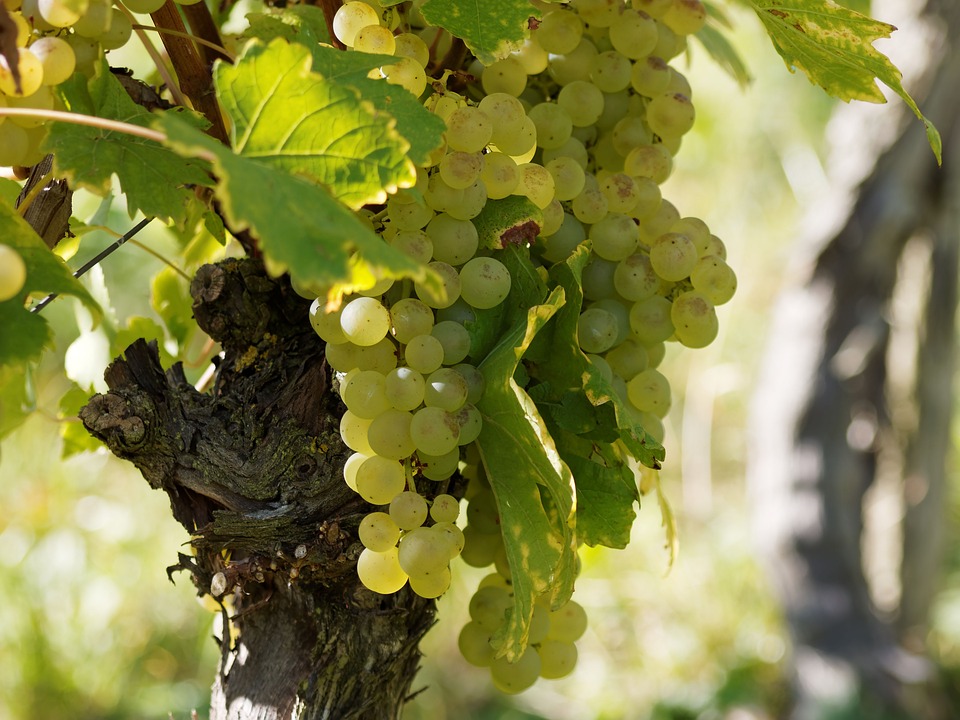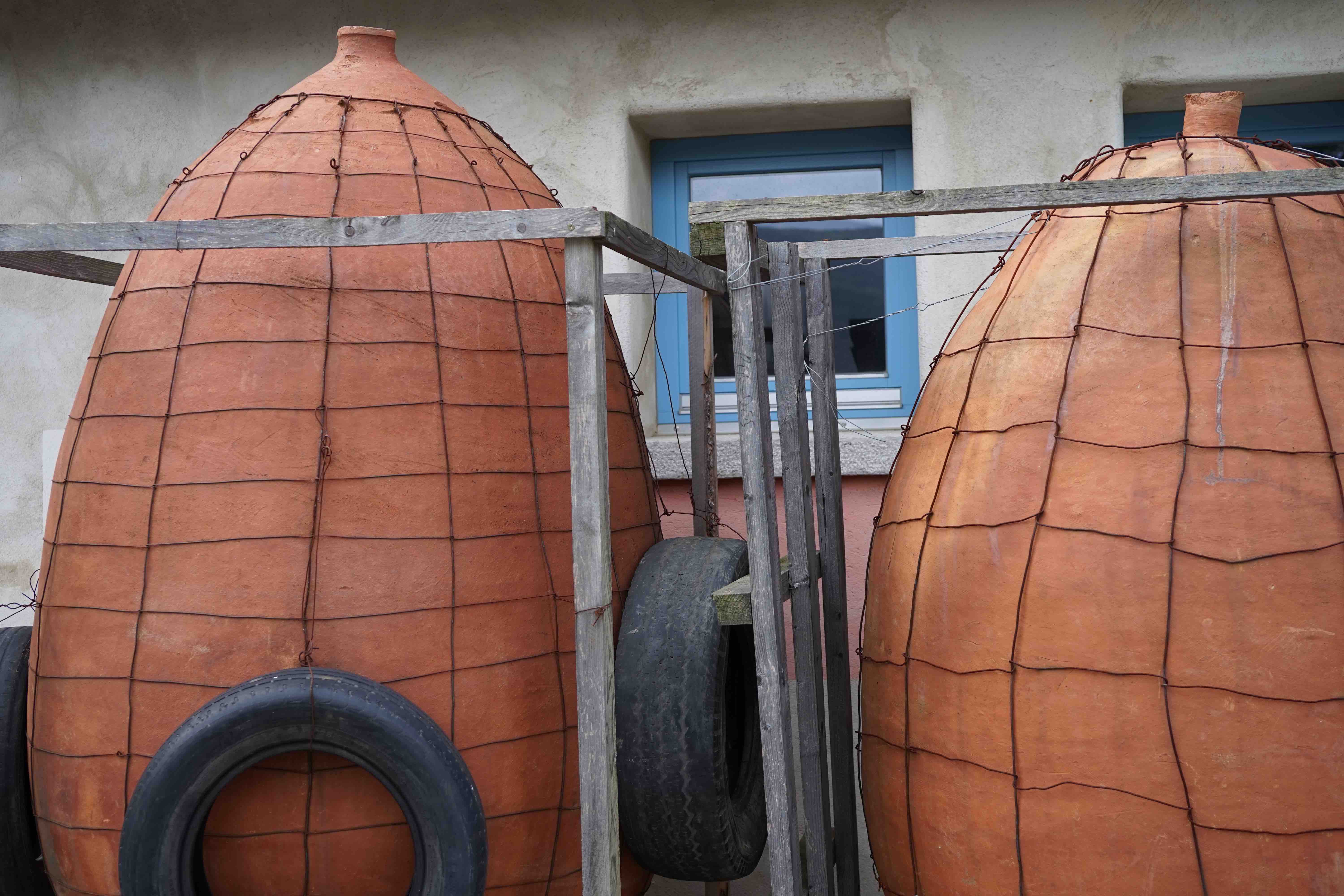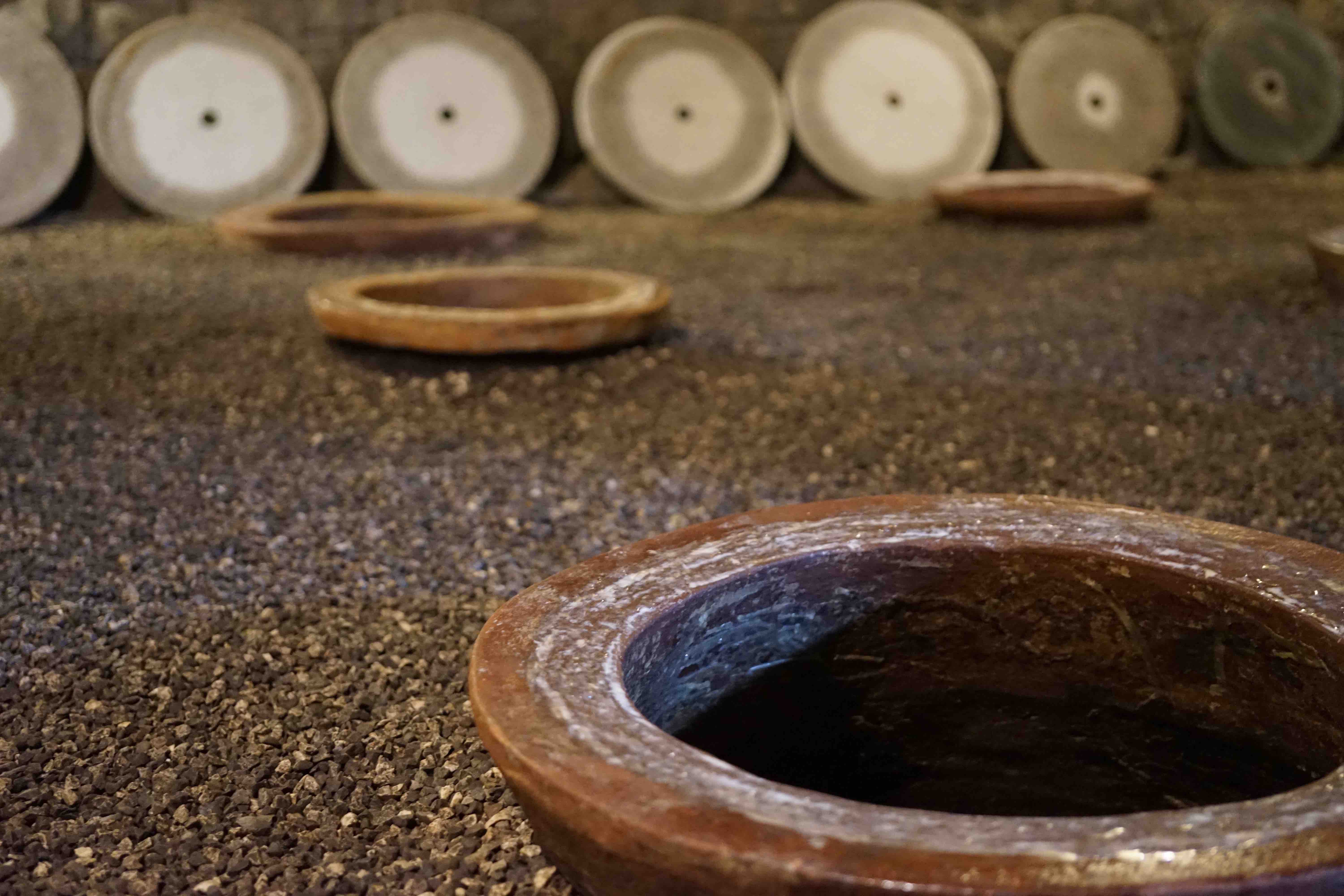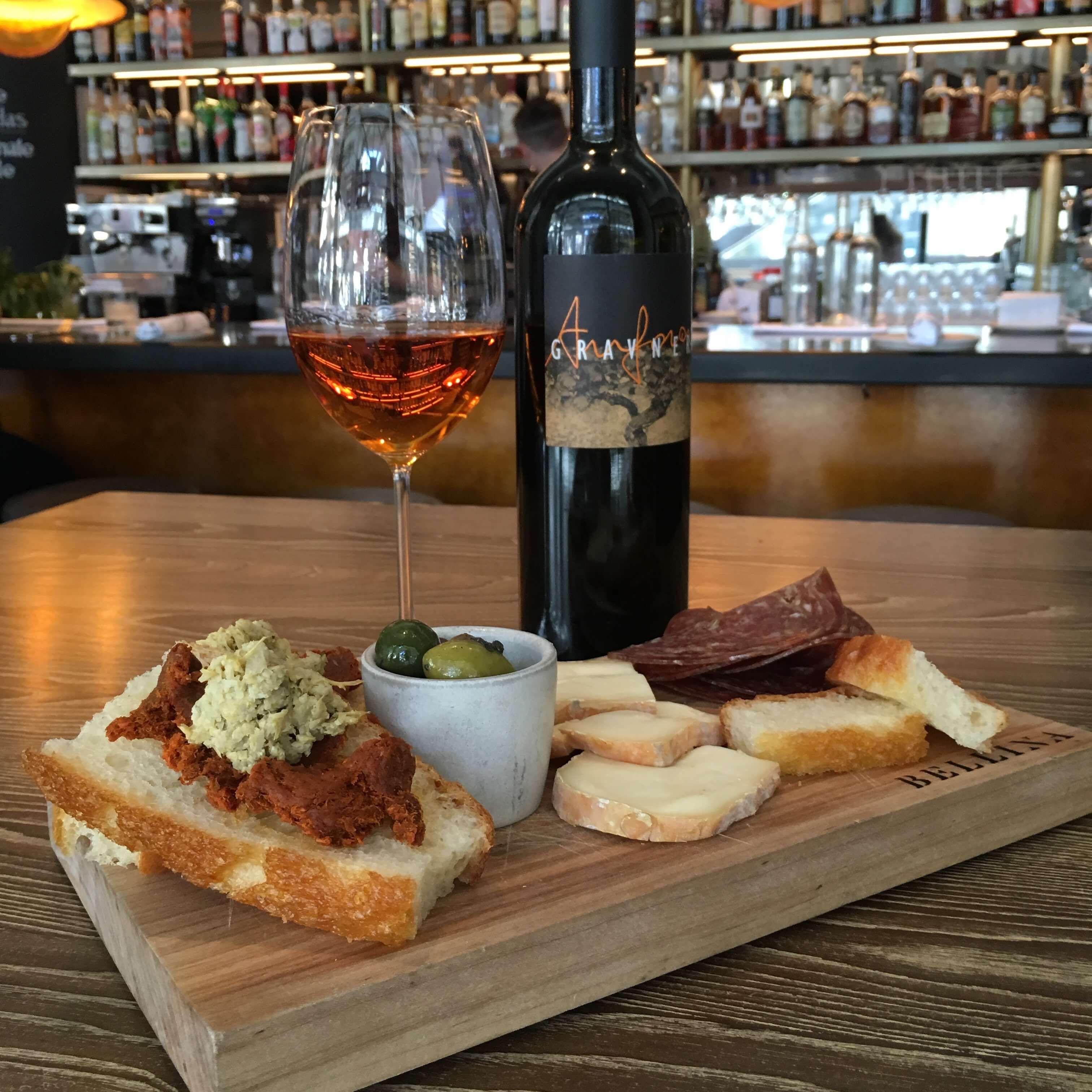A true protagonist of the contemporary natural wine movement, Josko Gravner is a pioneer in modern orange wine making and fermentation in amphorae. He has influenced many winemakers across the globe and reached legendary fame among wine lovers.

The winery is tucked away in breathtaking Oslavia in the Collio wine region of Friuli Venezia Giulia, on the border with Slovenia. A dramatic landscape that is ideal for winemaking thanks to its climate and to the steep hills that carry the signs of history. World wars brought many battles, suffering and change of national borders here.

Gravner’s winemaking credo is pretty simple: following the moon calendar interpreted by Maria Tun and based on the different moon phases, he establishes the most favorable days for specific work in the vineyard such as harvesting, prunig and sowing. A kind of esoteric approach.
On an estate of about 30 hectares – nearly half of it is untouched woods, meadows and ponds – Josko has chosen a radically natural approach to winemaking, respecting the land and it’s cycles, creating a balanced and natural environment for the vine, keeping intervention to a bare minimum both in the field and in the cellar. Safeguarding the soil and authenticity of the product is crucial. Treatments in the vineyard are very rare, and in the cellar there is no modern technology or special effects. No adding of selected yeasts, no unnecessary process or ingredient, just a tiny part of sulphur added before bottling to help preserve the wine over time.

The reason? After a wine trip to California in 1987, tasting over 1000 wines in 10 days, Josko decided conventional wine was really going in the opposite way of his philosophy. 5000 years of winemaking history had been erased over just a few decades of modern winemaking, standardizing processes and flavors.

By studying the history and origin of the vine Gravner ended up in the nation of Georgia in Caucasus, where the tradition of fermenting wine in amphorae dates back over 5000 years and has remained almost unchanged ever since. Amphorae are large clay vats, one of the oldest recipients used by man, dating back to ancient Rome and Greece. They can be entirely buried in the ground, half buried or not buried at all. Gravner buries them completely, leaving only the top part out of the ground. He considers the amphorae as quality amplifiers, perfect for the fermentation of his grape juice. After 7 months spent in the amphorae the wine is moved to large wooden casks for 35 months. It is then bottled, where it rests some more before being ready for market.

Tasting a Gravner wine isn’t just an (unbelievable) experience. It’s a journey in the world of one of the strongest advocates of thousands of years old traditional winemaking skills.